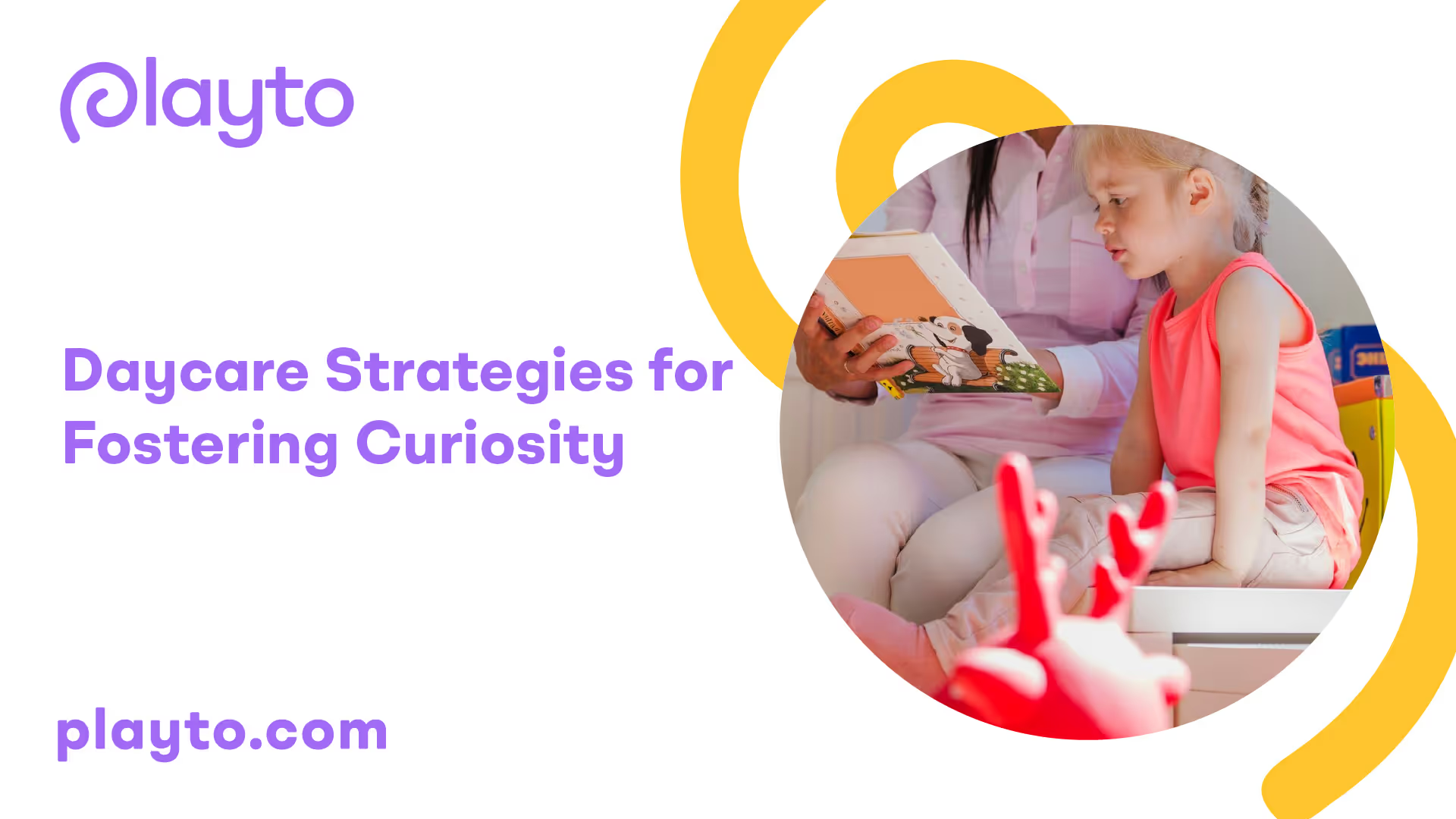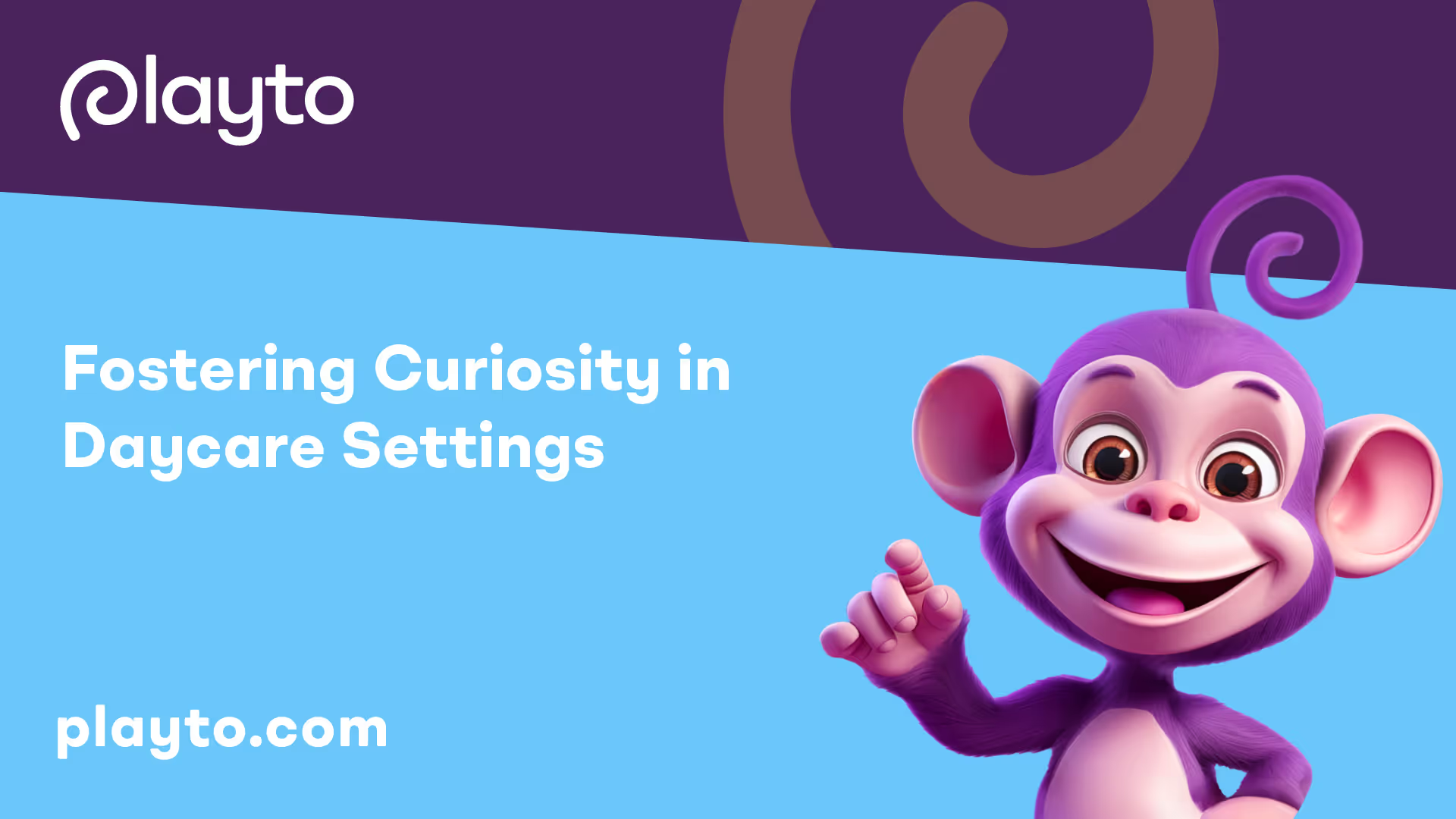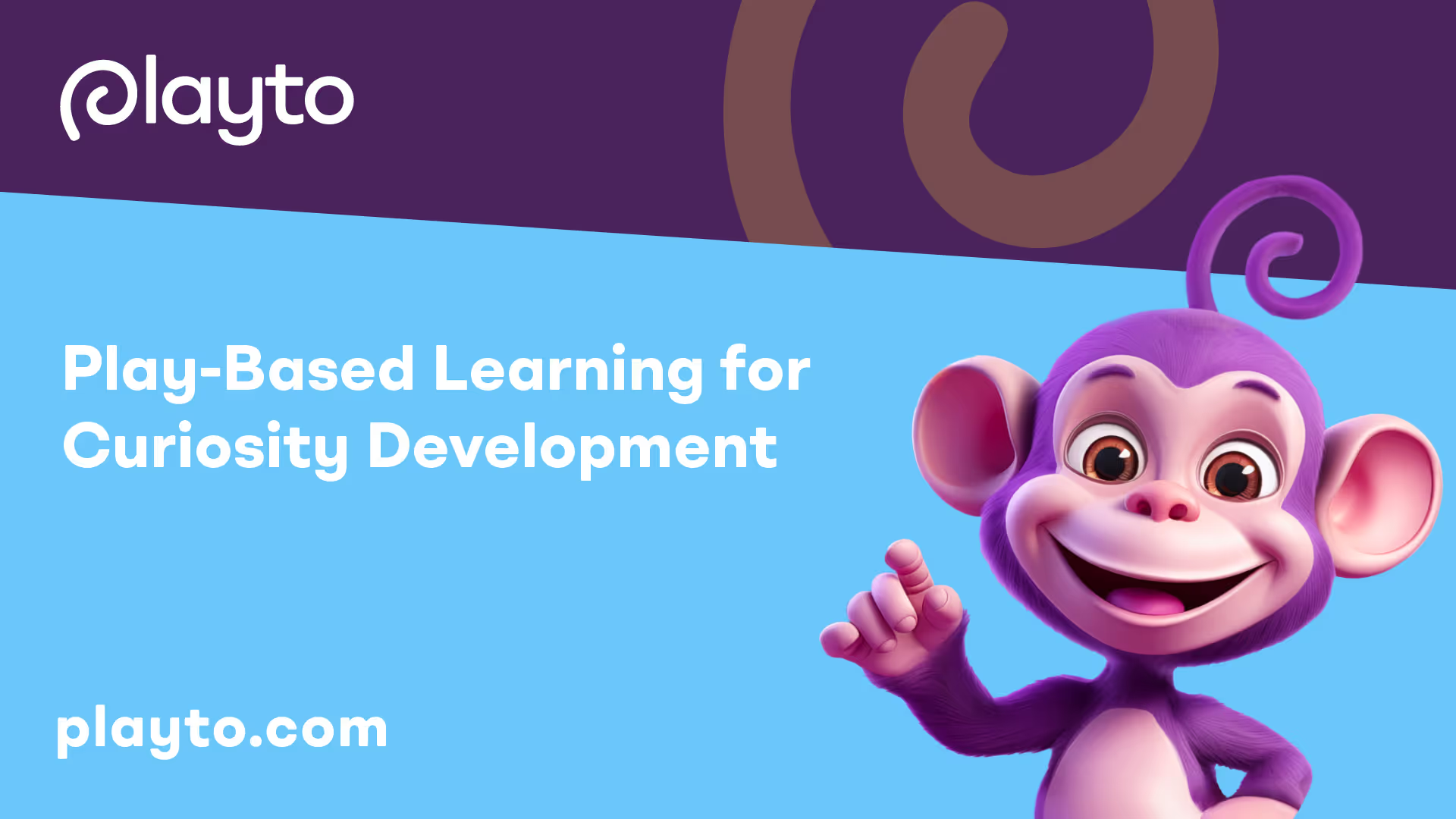
Understanding Curiosity in Child Development
Curiosity plays a crucial role in the development of young children. It is a natural inclination that drives them to explore, discover, and learn about the world around them. By fostering curiosity in daycare settings, caregivers can provide opportunities for children to engage in meaningful experiences that promote their overall development.
Importance of Curiosity
Decades of research have demonstrated that curiosity is related to many positive life outcomes. Curiosity not only fuels a child's desire to learn but also enhances their overall well-being. According to the Early Childhood NY, fostering curiosity in young children is essential as it helps develop characteristics of an active learner, including creativity, initiative, and patience.
Nurturing curiosity in daycare settings allows children to develop critical thinking skills, problem-solving abilities, and a thirst for knowledge. It encourages them to ask questions, seek answers, and explore new ideas, leading to a deeper understanding of the world.
Link Between Curiosity and Positive Outcomes
Curiosity is strongly linked to positive outcomes in various aspects of life. Research has shown that individuals with higher levels of curiosity tend to have better job performance, form stronger relationships, experience greater life satisfaction, and even demonstrate leadership abilities [1]. By fostering curiosity in daycare settings, caregivers set the foundation for children's future success and well-being.
By encouraging curiosity, caregivers help children become active learners who are motivated to explore, investigate, and make connections. This not only enhances their cognitive development but also nurtures their social and emotional skills. When children are encouraged to follow their curiosity, they gain a sense of empowerment and become more confident in their abilities to learn and explore.
In daycare settings, fostering curiosity can be achieved through a variety of strategies and approaches. By implementing effective strategies, caregivers can create an environment that supports and nurtures children's innate curiosity, providing them with opportunities for growth and development.

Fostering Curiosity in Daycare Settings
Curiosity is a vital aspect of a child's development, and it is essential to foster and encourage curiosity in daycare settings. By providing a nurturing and stimulating environment, caregivers can play a significant role in nurturing curiosity in young children.
Strategies for Encouraging Curiosity
To encourage curiosity in daycare settings, there are several effective strategies that caregivers can employ. These strategies include:
- Providing Practical, Interactive Learning Opportunities: Offering hands-on experiences and opportunities for exploration allows children to actively engage with their environment and develop a sense of curiosity. Incorporating sensory activities, experiments, and open-ended play materials can foster a sense of wonder and exploration.
- Posing Open-Ended Questions: Asking open-ended questions stimulates critical thinking skills and encourages children to think creatively. By posing questions that do not have a single correct answer, caregivers can inspire children to explore different possibilities and develop their curiosity.
- Integrating Children's Natural Inclinations into the Curriculum: Recognizing and incorporating children's interests and passions into the curriculum can ignite their curiosity. By tailoring activities and lessons to align with their individual interests, caregivers can deeply engage children in the learning process.
- Encouraging Inquiry through Projects and Experiments: Providing opportunities for children to engage in long-term projects and experiments allows them to explore their curiosity in-depth. This approach fosters a sense of ownership, encourages problem-solving skills, and promotes a natural sense of curiosity and exploration.
- Creating a Conducive Learning Environment: Designing a well-organized and stimulating environment can enhance children's curiosity. Providing a variety of age-appropriate materials, books, and resources that reflect diverse topics and cultures can inspire children's curiosity and encourage exploration.
- Demonstrating Respectable Behavior: Caregivers serve as role models for children. By demonstrating respectful behavior towards children, their ideas, and their discoveries, caregivers celebrate intellectual curiosity and resilience. This positive reinforcement encourages children to feel safe and supported in their quest for knowledge and exploration.
Role of Caregivers in Nurturing Curiosity
Caregivers play a crucial role in nurturing curiosity in young children. By consistently responding to children's signals and fostering positive and responsive interactions, caregivers model the importance of curiosity and exploration. Caregivers who engage in active listening, provide guidance, and express genuine interest in children's discoveries create a secure and supportive environment for curiosity to thrive.
Building strong relationships with children, their families, and colleagues is also essential in nurturing curiosity. When caregivers establish respectful and responsive relationships, children feel more comfortable exploring and engaging with their surroundings. Collaborating with families and colleagues to create a cohesive and stimulating environment can further enhance children's curiosity and create a sense of continuity between home and daycare.
By implementing effective strategies and recognizing the vital role caregivers play in nurturing curiosity, daycare settings can foster an environment that encourages children's natural curiosity and supports their overall development.

Play-Based Learning for Curiosity Development
In daycare settings, play-based learning is a powerful approach for fostering curiosity in children. Play-based learning recognizes that children learn best through hands-on exploration and discovery, engaging in purposeful play to acquire academic skills and develop social, emotional, and cognitive abilities [2]. By incorporating play-based curriculum, educators can create an environment that sparks curiosity and supports children's overall development.
Benefits of Play-Based Learning
Play-based learning offers numerous benefits for children's curiosity development. Here are some key advantages:
- Hands-on Exploration: Play-based learning allows children to actively engage in self-chosen and self-directed activities. By exploring their own interests and curiosities, children become motivated learners, driving their curiosity and expanding their knowledge.
- Holistic Development: Through play, children have the opportunity to develop various skills simultaneously. Play-based learning fosters cognitive, social, emotional, and physical development, providing a well-rounded approach to nurturing curiosity.
- Problem-Solving and Critical Thinking: Play-based learning encourages children to engage in problem-solving, critical thinking, and decision-making. As they encounter challenges during play, children learn to think creatively, develop strategies, and explore different solutions, enhancing their curiosity and problem-solving abilities.
- Language and Communication Skills: Play-based learning promotes language development by exposing children to new vocabulary in an organic and enjoyable way. Through playful conversations and interactions with peers, children develop communication skills and expand their language abilities.
- Creativity and Imagination: Play-based learning nurtures creativity and imagination in children. By engaging in imaginative play, they develop storytelling skills, explore different roles and perspectives, and ignite their curiosity about the world around them.
Implementing Play-Based Curriculum
To effectively implement play-based curriculum, educators can follow these guidelines:
- Provide self-chosen and self-directed activities: Allow children to choose their activities and follow their interests. This autonomy promotes curiosity and intrinsic motivation.
- Create enjoyable experiences without objectives: Focus on the process of play rather than specific outcomes. This approach encourages children to explore, experiment, and discover without the pressure of achieving predetermined goals.
- Facilitate unstructured play: Offer unstructured play opportunities that allow children to explore freely. This freedom fosters curiosity and encourages children to follow their natural inquisitiveness.
- Emphasize process-oriented activities: Encourage activities that focus on the journey rather than the final product. This approach promotes curiosity, creativity, and problem-solving skills as children engage in open-ended exploration.
- Support imaginative play: Provide materials and props that promote imaginative play. This type of play nurtures curiosity, empathy, and the ability to think outside the box.
By embracing play-based learning and incorporating these strategies, daycare settings can create an environment that stimulates curiosity, supports children's holistic development, and lays the foundation for a lifelong love of learning.
Creating an Enriching Environment for Curiosity
When it comes to fostering curiosity in a daycare setting, creating an enriching environment is key. By designing classroom spaces and incorporating discovery centers, you can provide children with engaging opportunities for exploration and learning.
Designing Classroom Spaces
The physical layout of the classroom plays a significant role in fostering curiosity. Designing classroom spaces that are open, inviting, and organized can encourage children to explore and engage with their surroundings. Consider the following strategies for creating an enriching environment:
- Flexible seating: Provide a variety of seating options such as cushions, bean bags, and floor mats. This allows children to choose a comfortable space that suits their individual learning preferences.
- Learning zones: Create designated areas for different activities such as reading, building, and art. Clearly define these areas using visual cues like rugs, shelves, or signage.
- Display children's work: Showcase children's artwork, projects, and creations throughout the classroom. This not only celebrates their accomplishments but also inspires curiosity and pride in their own work.
- Accessible materials: Ensure that materials and resources are easily accessible to children. Use labeled bins and shelves to organize supplies and encourage independent exploration.
By designing classroom spaces that are visually appealing, well-organized, and accessible, you can stimulate children's curiosity and create an environment that promotes active learning.
Incorporating Discovery Centers
Discovery centers are dedicated spaces within the classroom that encourage hands-on exploration and learning. These centers provide opportunities for children to engage in meaningful play-based activities, fostering curiosity and promoting development across various domains.
Consider incorporating the following discovery centers:
- Science center: Set up a dedicated area for scientific exploration. Provide magnifying glasses, magnets, plants, and other materials that encourage children to engage in hands-on experiments and investigations.
- Art center: Create a space where children can freely express their creativity through various art materials like paints, clay, and collage materials. Encourage open-ended art projects that allow for self-expression and imaginative thinking.
- Sensory center: Set up a sensory area filled with sensory bins, different textures, and materials that stimulate the senses. This allows children to explore and engage with their senses, promoting curiosity and sensory development.
- Block center: Provide a block area with different types of building materials such as wooden blocks, Legos, and magnetic tiles. This center encourages imaginative play, problem-solving, and spatial awareness.
By incorporating discovery centers into your daycare classroom, you create opportunities for children to engage in purposeful play, explore their interests, and develop a sense of curiosity about the world around them. To learn more about play-based learning and its benefits, refer to our article on daycare strategies for fostering imagination.
By designing classroom spaces that are conducive to curiosity and incorporating discovery centers, you can create an environment that nurtures children's natural curiosity and fosters a love for learning.
Supporting Individual Curiosity Needs
To effectively foster curiosity in daycare settings, it is essential to recognize and respond to the unique preferences of each child. By acknowledging and supporting their individual interests, caregivers can create an environment that encourages exploration and learning.
Responding to Unique Preferences
Children are born with a natural interest in their environment and use their senses to take in new information. As they develop, their curiosity becomes increasingly purposeful and meaningful. By acknowledging and responding to children's signals and interests, caregivers can build trust and self-confidence, which are crucial for them to initiate exploration and engage with objects and people [3].
Caregivers should observe and listen to each child, noting their preferences and areas of curiosity. By recognizing what piques their interest, caregivers can tailor activities and experiences to match their individual preferences. For example, if a child shows a keen interest in animals, the caregiver can provide books, toys, or activities related to animals to further foster their curiosity.
Flexibility in Learning Environments
To support individual curiosity needs, daycare environments should be flexible and adaptable. This allows caregivers to create personalized learning experiences based on each child's interests and preferences. By offering a variety of materials, activities, and learning centers, children can explore according to their own curiosities and learning styles.
Flexibility also extends to the daily routines and schedules. Allowing children to have some control over their activities and choices within appropriate boundaries can empower them to follow their curiosity. For example, incorporating free play and independent exploration time into the daily routine gives children the opportunity to explore their interests and pursue their own inquiries.
By embracing the uniqueness of each child and providing a flexible learning environment, caregivers can effectively support individual curiosity needs in daycare settings. This approach not only fosters a love of learning but also helps children develop a sense of autonomy and self-direction. For more daycare strategies, check out our articles on handling homesickness, fostering resilience, fostering imagination, handling sibling rivalry, handling allergies, handling picky eaters, handling special needs, and handling behavioral issues.
Overcoming Challenges in Fostering Curiosity
Encouraging and nurturing curiosity in daycare settings can sometimes face hindrances that need to be addressed. By understanding these hindrances and implementing effective strategies, caregivers can create an environment that fosters curiosity and supports children's natural desire to explore and learn.
Hindrances to Curiosity
According to Dr. Bruce Perry, there are three common ways that adults can hinder a child's curiosity: fear, disapproval, and absence. Fearful children may avoid exploring and being curious, while constant disapproval from adults can diminish a child's willingness to be curious. Additionally, the absence of an invested adult may impact a child's curiosity without the safety boundary and shared joy of learning [4].
In an academic environment focused solely on scores, targets, and conformity, children's natural curiosity can be inhibited. It is crucial to nurture this innate desire and prevent negative labels associated with curiosity as children grow older [4]. Moreover, the prevalence of plastic electronic toys that play more than children do can lead to a loss of curiosity and engagement in deep exploration [4].
Strategies to Overcome Curiosity Barriers
To overcome these hindrances and promote curiosity in daycare settings, caregivers can implement the following strategies:
- Create a safe and supportive environment: Establish an environment where children feel safe to explore, ask questions, and take risks. Encourage a nonjudgmental and positive atmosphere that values curiosity.
- Lead by example: Show genuine curiosity and enthusiasm for learning. When caregivers display curiosity, children are more likely to follow suit. Engage in conversations, ask open-ended questions, and actively listen to children's ideas and thoughts.
- Provide varied and open-ended materials: Offer a wide range of materials and resources that encourage exploration and problem-solving. Open-ended materials, such as blocks, art supplies, and natural objects, allow children to use their imagination and think creatively.
- Support child-led investigations: Encourage children to pursue their own interests and questions. Allow them to take the lead in their learning, providing guidance and resources as needed. This empowers children to be active participants in their own education.
- Emphasize process over product: Focus on the process of learning rather than the end result. Encourage children to engage in trial and error, embrace mistakes as learning opportunities, and celebrate their efforts.
- Incorporate nature and the outdoors: Nature provides a wealth of opportunities for curiosity and exploration. Create outdoor spaces that allow children to connect with the natural world and engage in hands-on experiences.
- Encourage collaboration and social interaction: Foster an environment that promotes collaboration and social interaction among children. Group projects and discussions can spark curiosity and encourage the sharing of ideas.
By implementing these strategies, caregivers can help children overcome barriers to curiosity and create an environment that supports their innate desire to explore, question, and learn. Remember, each child is unique, so it's important to observe and respond to individual preferences and provide flexible learning environments that cater to their specific needs. For more strategies on handling different challenges in daycare settings, check out our articles on daycare strategies for handling homesickness, daycare strategies for fostering resilience, and daycare strategies for fostering imagination.
